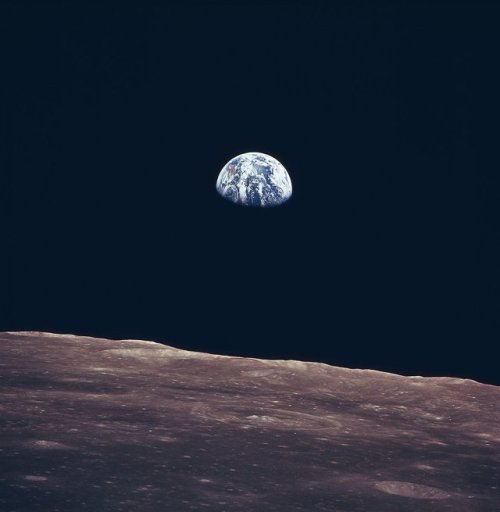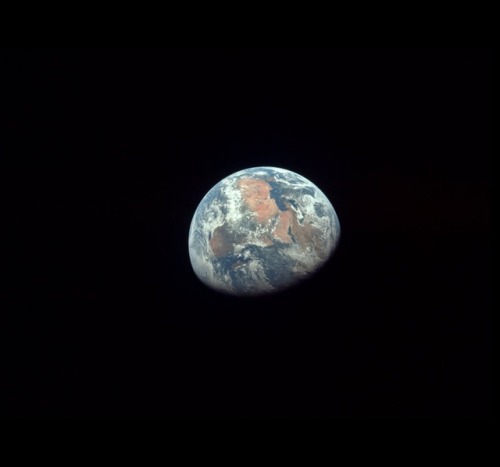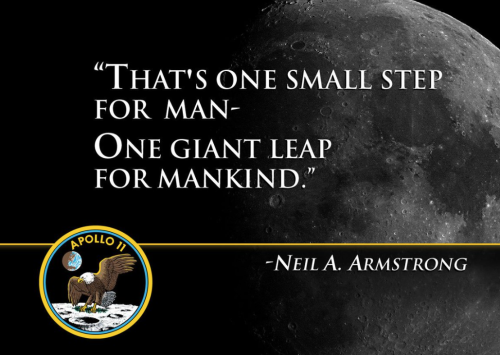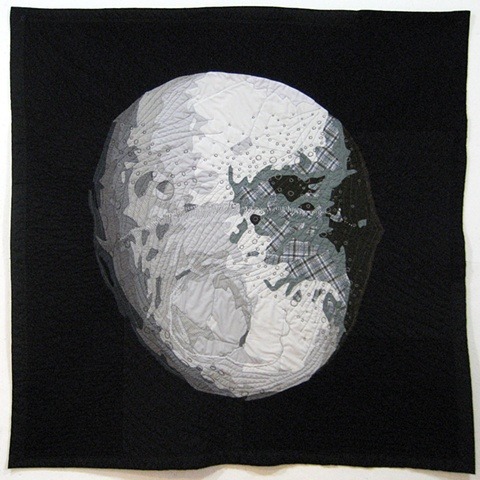Map Depicting Which US States Legally Consider Pluto A Planet.

Map depicting which US States legally consider Pluto a planet.
More Posts from Nauticastro and Others

From Earthrise to the black hole: astronomy’s most famous images.
Photographs from history that capture humanity’s exploration of the heavens.

20 July 1969
One of the most iconic views of Earth, taken from the Apollo 11 spacecraft as it orbited the moon. Describing the scene, the astronaut Neil Armstrong said: ‘It suddenly struck me that that tiny pea, pretty and blue, was the Earth. I put up my thumb and shut one eye, and my thumb blotted out the planet Earth. I didn’t feel like a giant. I felt very, very small’ | This caption was updated on 11 April 2019 to correct the date the picture was taken, photograph: Nasa.

21 July 1969
Buzz Aldrin, the lunar module pilot for the first moon landing, poses on the lunar surface. The footprints of the astronauts are clearly visible in the soil. Neil Armstrong took the picture with a 70mm Hasselblad lunar surface camera Photograph: American Photo Archive/Alamy

25 February 1979
This dramatic view of Jupiter’s great red spot and its surroundings was obtained by the Voyager 1 space probe
Photograph: JPL/Nasa/UIG/Getty Images

14 February 1990
Often referred to as ‘the pale blue dot’ image, this picture was taken when Voyager 1 was 4bn miles (6.4bn km) from Earth and 32 degrees above the ecliptic plane. Earth is a mere point of light, just 0.12 pixels in size when viewed from that distance. The fuzzy light is scattered sunlight because Earth was close to the sun (from the perspective of Voyager)
Photograph: JPL/Nasa

6 January 2004
The first colour image of Mars taken by the panoramic camera on the Mars Exploration Rover Spirit. It was the sharpest photograph ever taken on the surface of the planet
Photograph: JPL/Nasa/AP

25 September 2012
Called the eXtreme Deep Field, or XDF, this photo was assembled by combining 10 years of Hubble space telescope photographs taken of a patch of sky at the centre of the original Hubble Ultra Deep Field. By collecting faint light over many hours of observation, the telescope revealed thousands of galaxies, both nearby and very distant, making it the deepest image of the universe ever taken at that time
Photograph: Hubble space telescope/Nasa/ESA

24 July 2015
A combination of images captured by the New Horizons space probe, with enhanced colours to show differences in the composition and texture of Pluto’s surface
Photograph: AP

10 April 2019
The first image of a black hole, captured by the Event Horizon telescope (EHT) – a planet-scale array of eight ground-based radio telescopes forged through international collaboration. The shadow of a black hole seen here is the closest we can come to an image of the black hole itself, a completely dark object from which light cannot escape
Photograph: EHT Collaboration/UCL
Can u post pics of earth 🌍

The Blue Marble—Earth as seen by Apollo 17 in 1972

This incredible image of the Earth rise was taken during lunar orbit by the Apollo 11 mission crew in July of 1969. The first manned lunar mission, Apollo 11 launched aboard a Saturn V launch vehicle from the Kennedy Space Center, Florida on July 16, 1969 and safely returned to Earth on July 24, 1969.

This image taken by an astronaut aboard Space Shuttle mission STS-103 shows a panoramic view of Earth at moonrise.

In this rare image taken on July 19, 2013, the wide-angle camera on NASA’s Cassini spacecraft has captured Saturn’s rings and our planet Earth and its moon in the same frame.

Earth as seen by Apollo 11 astronauts at the beginning of the third day of TLC

A view of the Apollo 11 lunar module “Eagle” as it returned from the surface of the moon to dock with the command module “Columbia”. A smooth mare area is visible on the Moon below and a half-illuminated Earth hangs over the horizon. The lunar module ascent stage was about 4 meters across. Command module pilot Michael Collins took this picture just before docking at 21:34:00 UT (5:34 p.m. EDT) 21 July 1969.

This panorama featuring Earth’s horizon and clouds over the South Pacific Ocean, complemented with a “tiny” distant moon (upper right), was photographed by one of the Expedition 36 crew members aboard the International Space Station.

The Sun from the Internation Space Station

images: NASA/JPL
To see more images and posts about the Earth click here.
It wrinkles my brain that Jupiter’s moon Europa has oceans that are sixty miles deep, while Earth’s oceans only reach seven miles deep at most. I’m willing to bet good money that there’s life in Europa’s oceans. Like five bucks. You hear me, NASA? I bet you five bucks that there’s life on Europa… Now that there’s money and reputation on the line, I bet they send a mission there real quick.

:-P
How the media depicts the Apollo 11 mission:

Actual quotes from the Apollo 11 mission:





It is never too early to start talking about outer space labor law




space quilts by jimmy mcbride
I drew a little something for the Hiveworks micro comic summer~





“The anthropologists got it wrong when they named our species Homo sapiens (‘wise man’). In any case it’s an arrogant and bigheaded thing to say, wisdom being one of our least evident features. In reality, we are Pan narrans, the storytelling chimpanzee.”
— Terry Pratchett (via hot-elf)
-
 captainpetebradshaw liked this · 2 weeks ago
captainpetebradshaw liked this · 2 weeks ago -
 blogquantumreality liked this · 1 month ago
blogquantumreality liked this · 1 month ago -
 wwinnnryy-rockbelll liked this · 1 month ago
wwinnnryy-rockbelll liked this · 1 month ago -
 2cats1bathrobe-blog liked this · 2 months ago
2cats1bathrobe-blog liked this · 2 months ago -
 th3seus1123 liked this · 2 months ago
th3seus1123 liked this · 2 months ago -
 thelordsprostitute reblogged this · 2 months ago
thelordsprostitute reblogged this · 2 months ago -
 thelordsprostitute liked this · 2 months ago
thelordsprostitute liked this · 2 months ago -
 purple-hel reblogged this · 2 months ago
purple-hel reblogged this · 2 months ago -
 adownbadbitch liked this · 2 months ago
adownbadbitch liked this · 2 months ago -
 tbhwhocaresanymore reblogged this · 2 months ago
tbhwhocaresanymore reblogged this · 2 months ago -
 koba-baboba reblogged this · 2 months ago
koba-baboba reblogged this · 2 months ago -
 koba-baboba liked this · 2 months ago
koba-baboba liked this · 2 months ago -
 tinteatime liked this · 2 months ago
tinteatime liked this · 2 months ago -
 nildespirandum liked this · 2 months ago
nildespirandum liked this · 2 months ago -
 mistress-of-words reblogged this · 2 months ago
mistress-of-words reblogged this · 2 months ago -
 fritz-wulf reblogged this · 2 months ago
fritz-wulf reblogged this · 2 months ago -
 fritz-wulf liked this · 2 months ago
fritz-wulf liked this · 2 months ago -
 helpcantfindfreename reblogged this · 2 months ago
helpcantfindfreename reblogged this · 2 months ago -
 helpcantfindfreename liked this · 2 months ago
helpcantfindfreename liked this · 2 months ago -
 girlwhoiswaiting reblogged this · 2 months ago
girlwhoiswaiting reblogged this · 2 months ago -
 grumpygreenwitch reblogged this · 2 months ago
grumpygreenwitch reblogged this · 2 months ago -
 grumpygreenwitch liked this · 2 months ago
grumpygreenwitch liked this · 2 months ago -
 auctor-phineas-quillsworthy liked this · 2 months ago
auctor-phineas-quillsworthy liked this · 2 months ago -
 i-do-not-dislike-fudge reblogged this · 2 months ago
i-do-not-dislike-fudge reblogged this · 2 months ago -
 wgfaves reblogged this · 4 months ago
wgfaves reblogged this · 4 months ago -
 belaesthetic reblogged this · 4 months ago
belaesthetic reblogged this · 4 months ago -
 whiskeytiddies reblogged this · 4 months ago
whiskeytiddies reblogged this · 4 months ago -
 hunnybel liked this · 4 months ago
hunnybel liked this · 4 months ago -
 heretekadept reblogged this · 4 months ago
heretekadept reblogged this · 4 months ago -
 some-guy-named-dominyk reblogged this · 4 months ago
some-guy-named-dominyk reblogged this · 4 months ago -
 some-guy-named-dominyk liked this · 4 months ago
some-guy-named-dominyk liked this · 4 months ago -
 captainautismo reblogged this · 4 months ago
captainautismo reblogged this · 4 months ago -
 caperantagonist reblogged this · 4 months ago
caperantagonist reblogged this · 4 months ago -
 caperantagonist liked this · 4 months ago
caperantagonist liked this · 4 months ago -
 wasserblume reblogged this · 4 months ago
wasserblume reblogged this · 4 months ago -
 1-800-ishi reblogged this · 4 months ago
1-800-ishi reblogged this · 4 months ago -
 1-800-ishi liked this · 4 months ago
1-800-ishi liked this · 4 months ago -
 xnyasux reblogged this · 4 months ago
xnyasux reblogged this · 4 months ago -
 xnyasux liked this · 4 months ago
xnyasux liked this · 4 months ago -
 pyresrpgear reblogged this · 4 months ago
pyresrpgear reblogged this · 4 months ago -
 shikariix liked this · 4 months ago
shikariix liked this · 4 months ago -
 shikariix reblogged this · 4 months ago
shikariix reblogged this · 4 months ago -
 peanutdream reblogged this · 4 months ago
peanutdream reblogged this · 4 months ago -
 oppenheimerstyle reblogged this · 4 months ago
oppenheimerstyle reblogged this · 4 months ago -
 lessproblematical reblogged this · 4 months ago
lessproblematical reblogged this · 4 months ago -
 lookoutformewontyouthough reblogged this · 4 months ago
lookoutformewontyouthough reblogged this · 4 months ago -
 infinis-premices reblogged this · 4 months ago
infinis-premices reblogged this · 4 months ago -
 silver-lily-louise liked this · 5 months ago
silver-lily-louise liked this · 5 months ago -
 bugs-are-buddies liked this · 5 months ago
bugs-are-buddies liked this · 5 months ago

